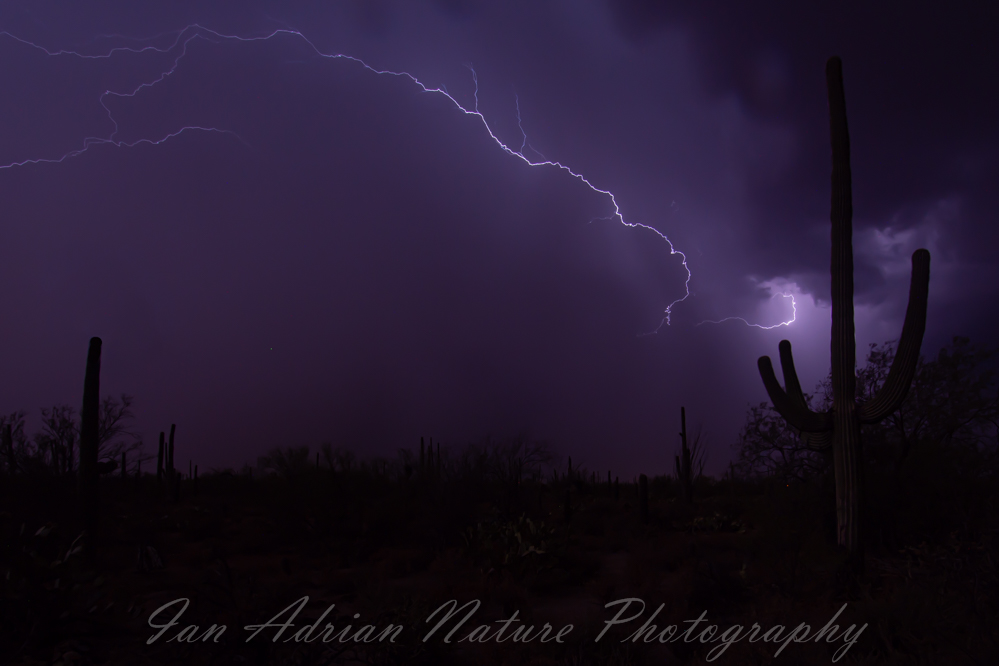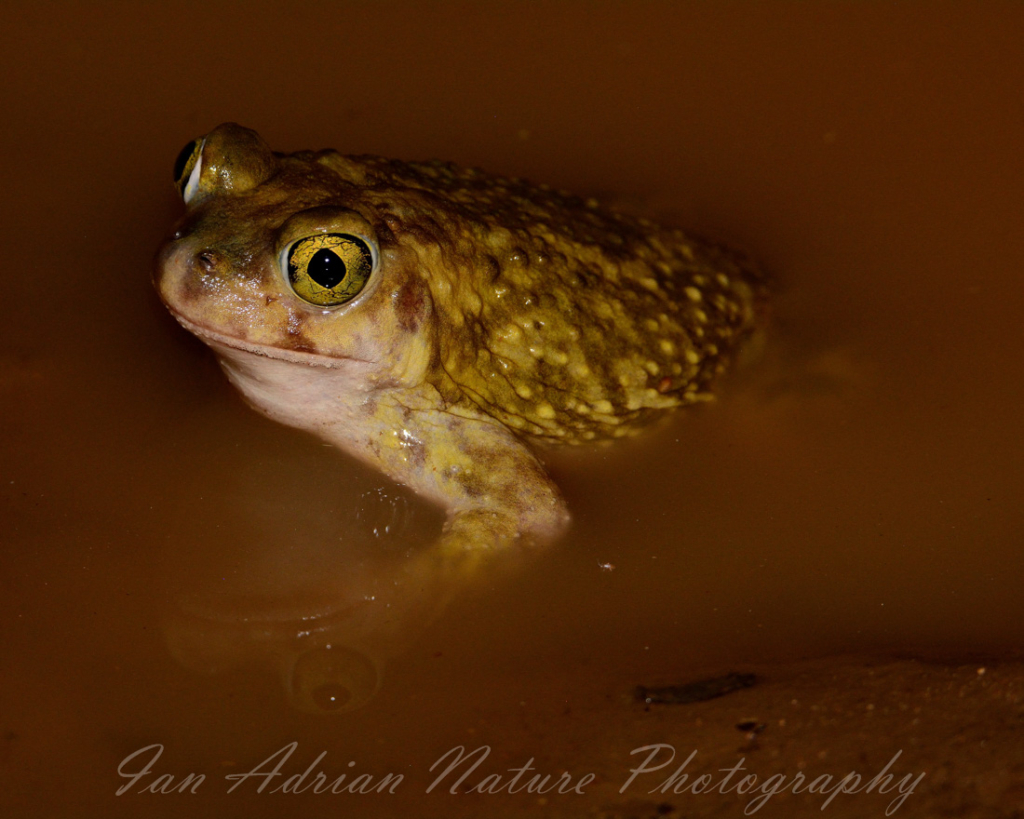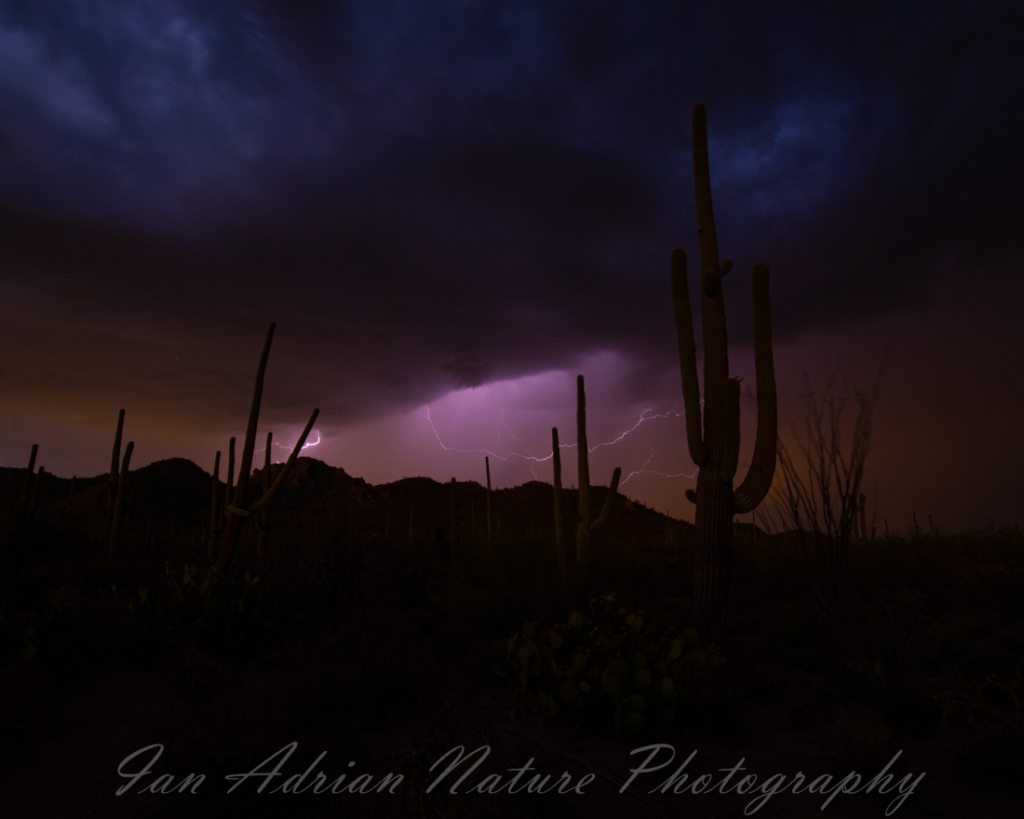The Monsoons

It’s hot! No, that’s an understatement. The Sonoran Desert is a damn inferno. For some time, temperatures have regularly been reaching an excess of 110 degrees F. After tolerating these dry, scorching temperatures for long enough, residents of Southern Arizona are finally granted some relief. Welcome to monsoon season!
Throughout much of the summer, unbearably-high temperatures are interspersed with frequent and often intense thunderstorms. These storms come through Mexico, often originating in the Sea of Cortez or Gulf of Mexico, where they proceed to meander gradually northward, . The southern part of Arizona experiences far more frequent and brutal storms than further north. The rain here can be downright destructive, resulting in devastating floods that wash out roads and render transportation next to impossible in some areas. In addation to the torrential rain, forceful winds contribute to power outages, sometimes tearing down trees and cacti. Despite these notable inconveniences, the good far outweighs the bad.

Not only does the rain drastically reduce temperatures and water our gardens, but it offers much-needed relief to a very dehydrated desert. Plants that have been semi-dormant for the last couple of months (such as ocotillos) suddenly begin to show off their freshly-sprouted leaves. Such cacti as barrels and pincushions may begin to grace the desert with beautiful flowers. Even those plants which don’t immediately react will still savor the condensation, often relying on such moisture for blooms that won’t be realized for months to come.
This floral hiatus only begins with the plants, but extends much further. It radiates up the food chain, offering salvation to all of the desert’s inhabitants. Revitalized by the moisture and new flowers, bees and butterfly’s manically react. Previously barren desert arroyo’s swell with water, attracting a host of amphibians (such as Couch’s Spadefoot Toads) to congregate en masse. Snakes and other predators find renewed vigor from the abundance of prey drawn to the surface. Megafauna, such as coyotes and bobcats not only respond to the food availability, but having endured such frugal water rations, are suddenly offered a chance to hydrate and recover from unrelenting dehydration.


Monsoon storms are entirely crucial for the survival of the entire Sonoran Desert ecosystem. When considering all the ways mother nature benefits from the deluge of rain, the visual appeal that we humans often enjoy seems a bit arbitrary. As a nature lover / photographer, however, I’m entirely smitten with the desert monsoons, both for the sake of Arizona’s wild inhabitants, and one of the best light shows on the planet!


Facebook Comments